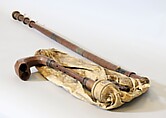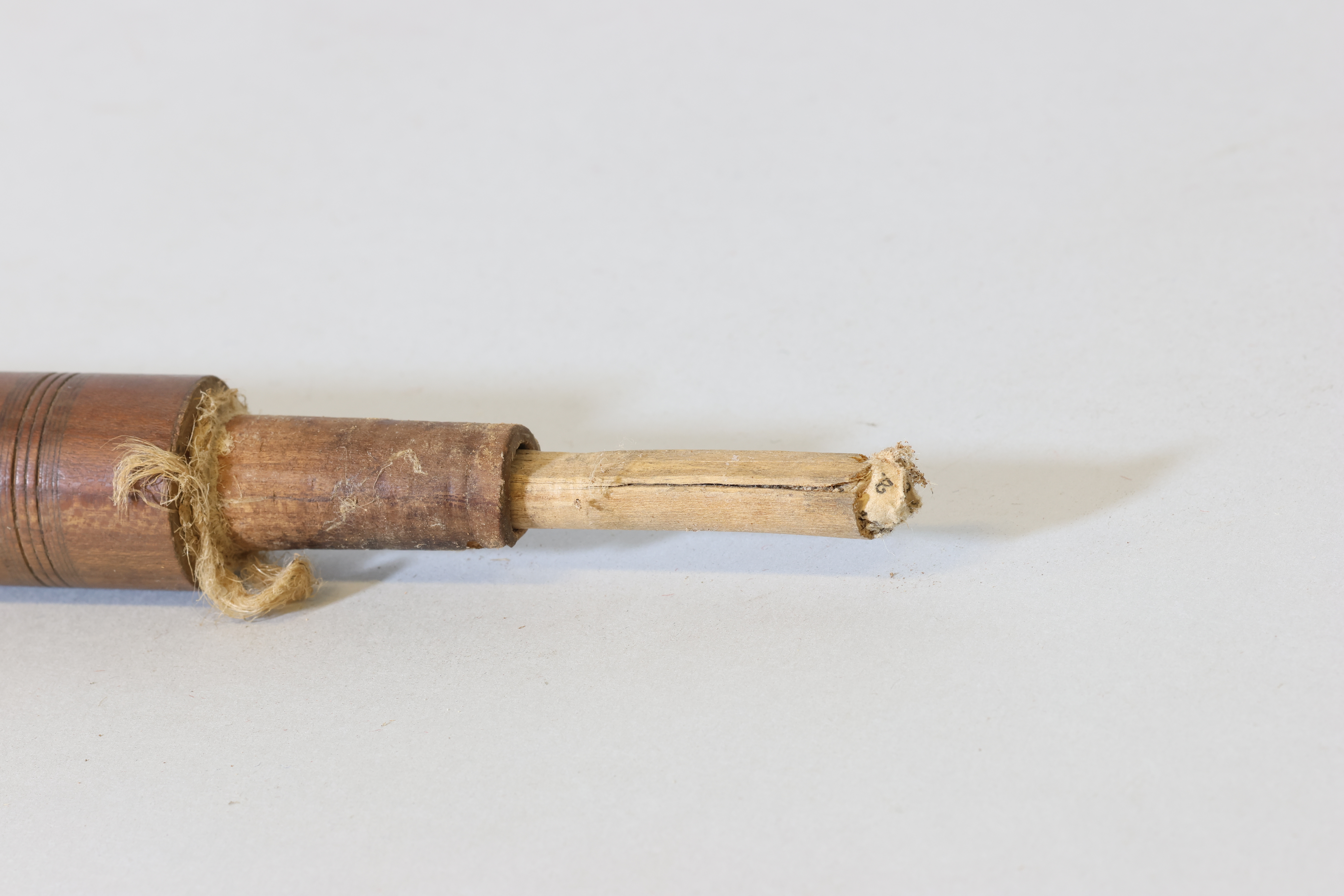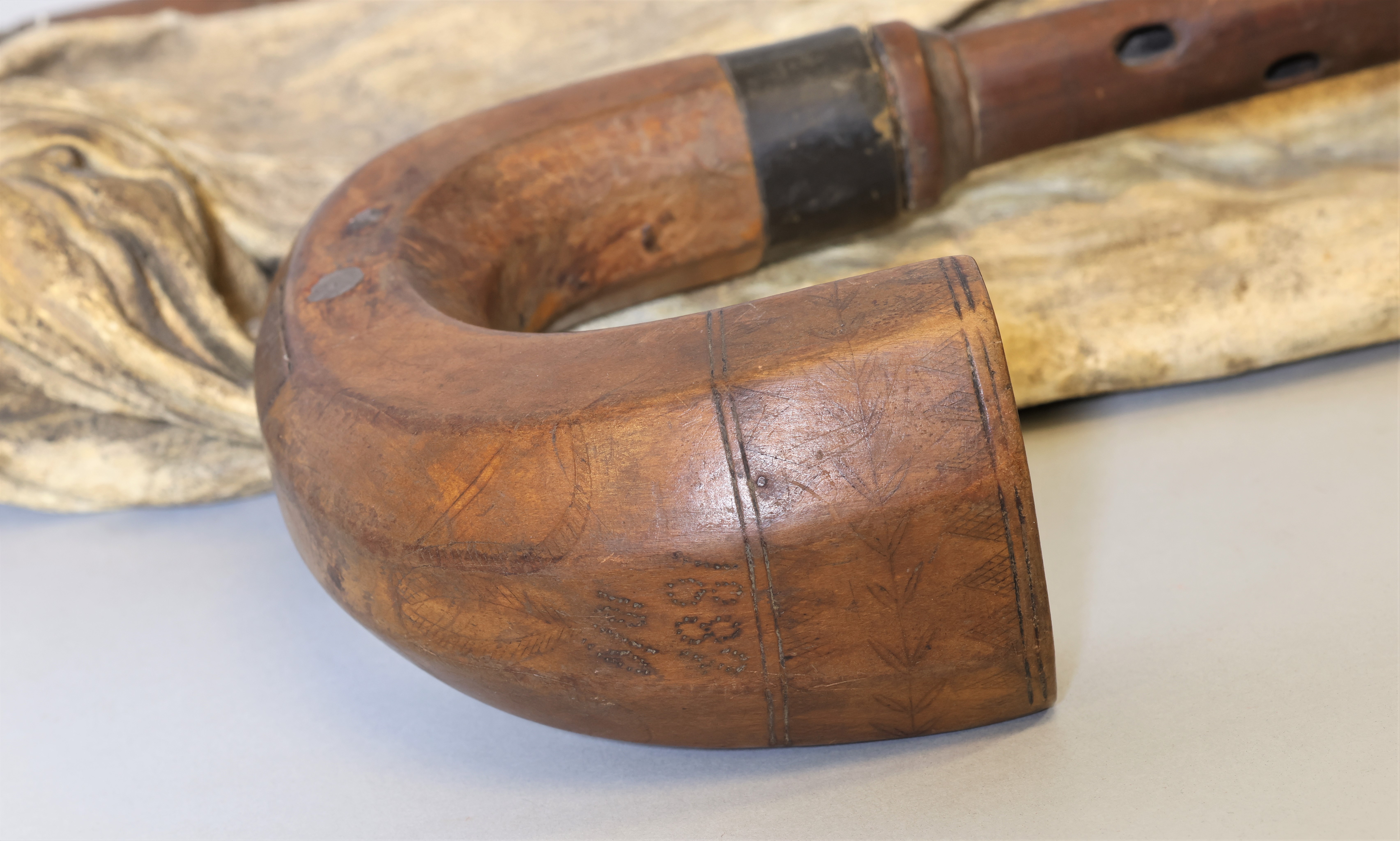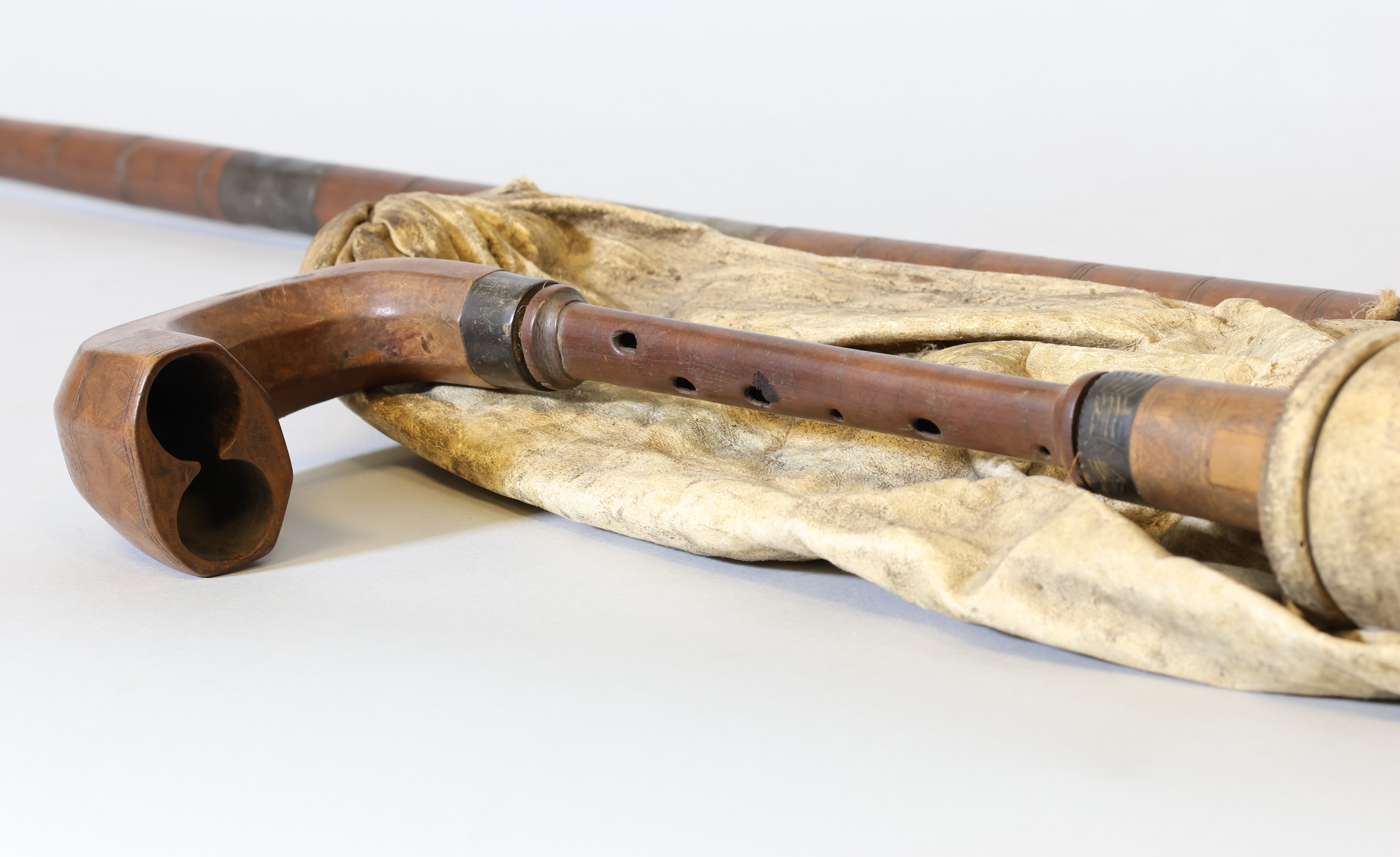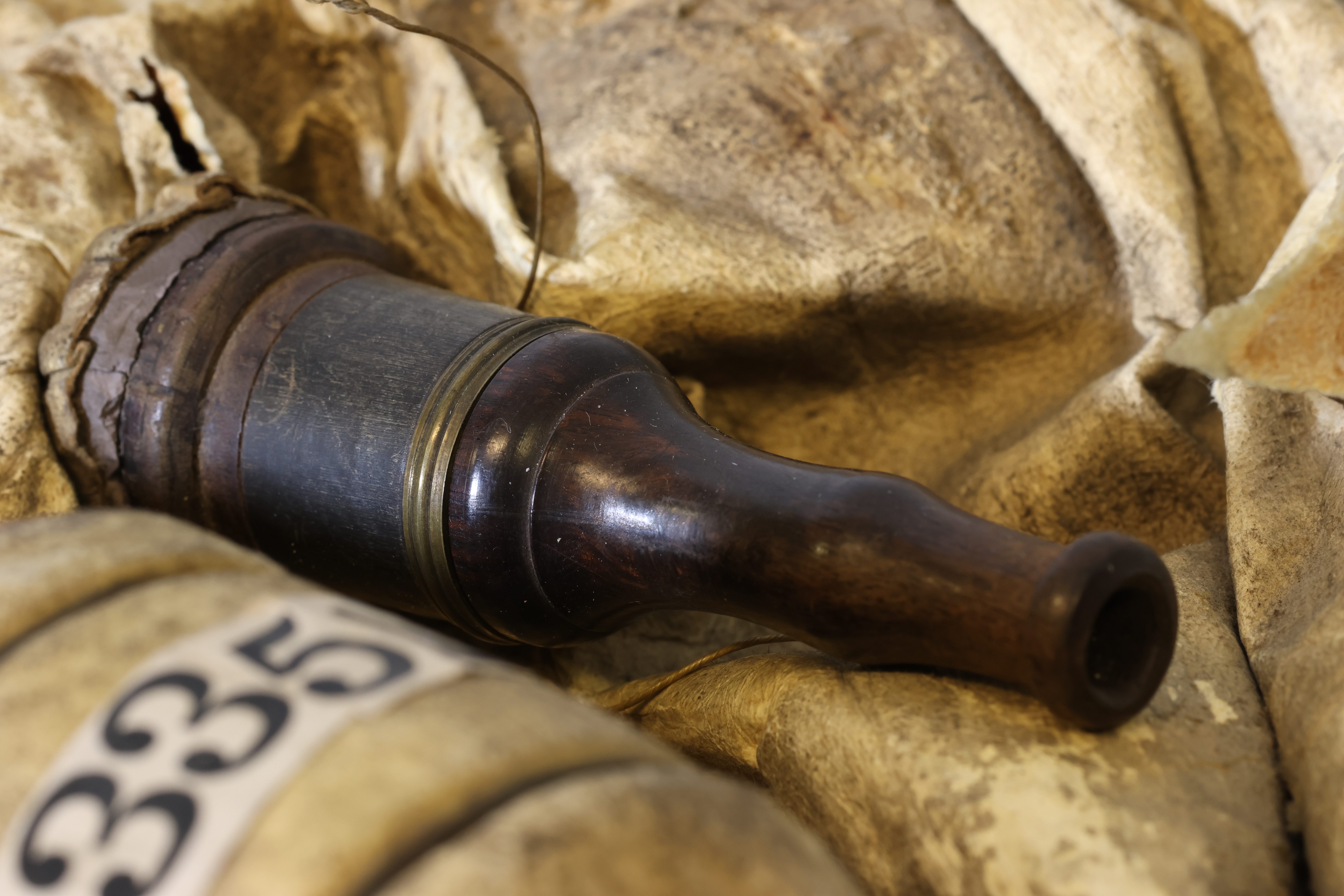Gajde
Not on view
The gajde is a double bored bagpipe that was historically widespread in Northern Serbia (Srem, Vajvodini) and in North-Western Croatia (Slavonia). Pipers were well-respected and played at weddings and celebrations. Some also played at communal village events, such as harvests, to encourage people during their work. While gajde players were common in Slavonia, Srijem and Northern Serbia, their numbers had already started to decline in the 1930s. In the early 21st century, they are almost extinct from Serbia. Alekzandar Janošev attributes this to new customs come from the West, replacing traditional celebrations, and the rise of instruments such as the accordion (Janošev, 2011).
This gajde was made in the late 19th century. The instrument was bought in 1903 or 1904 by Mary Elizabeth Brown. Bagpipes were often made by the bagpipers themselves. The bag is made out of goat skin. Goat hide was considered superior to sheepskin as it was more airtight. The chanter (gajdenica) is probably made out of plum wood, the favored wood for these bagpipes as it was harder than other types of wood (see Širola 1937:216-17). It is double bored, with five finger holes on the left bore (melody) and one on the right bore (drone). The chanter, as well as the chanter stock and the bell, are all delicately carved with geometrical designs. The bell, in the shape of a wooden horn (rog), features a leaf design and is marked with a date, presumably the date of making: 1897/10/9. The bell features two side holes that are covered with wax. The interior of the bell has two communicating bores. Gajde-maker and player Adam Ćipuzović from the village of Andrijevci in Slavonia, Croatia, explained to the ethnographer Božidar Širola in the 1930s that he would merge the two horn openings instead of keeping the partition closed as might be found on other gajdes: ‘this is where the delighted wedding guests and dancers will insert their gifts into the gajde. That’s why the partition had to be broken … so that a forint [silver coin] could be pushed into the horn’ (Ćipuzović quoted in Širola 1937:241).
The drone (prdaljka) is in three parts, attached to a stock. The joints are reinforced with metal (probably pewter, possibly lead), and the end of the drone is made out of horn. The long, thin, cylindrical-bored drone is delicately grooved all along, with additional ornamental rings turned into the wood. The insufflation pipe (duvaljka) is short and made out of a dark wood. While most gajde players used mouth-blown instruments, some attached their bagpipe to bellows to enable them to sing more easily, as gajde players often sang and played at the same time. However, many pipers chose to continue playing mouth-blown instruments, some using this as a strategy to avoid having to sing too much (Širola 1937:242).
(Cassandre Balosso-Bardin, 2023)
Technical description
Double-bored reddish wood chanter 215 mm (570 mm including 80 mm tenon and upturned wood bell), cylindrical bores;
R1/0, L5/0, with 1 large venthole on left chanter, the fingerholes unevenly sized and spaced, IV on left chanter tuned with wax;
Reeds missing (typically, single cane reed);
1 reddish wood bass drone in 3 sections, single upcut reed of light wood, 77 mm, end broken and stopped with newspaper, unlapped;
Short curved wooden blowpipe, 82 mm (including 23 mm tenon, lapped), leather flapper valve fitted into slit in pipe tenon, undressed goatskin bag without cover, drone and blowpipe in forelegs, chanter in neck;
2 cylindrical stocks for blowpipe and drone, large wooden round terminating in flattened cylindrical stock for chanter;
All pipes and stocks except blowpipe mounted with horn and elaborately carved, chanter bell handcarved with leaf and crosscut patterns, blowpipe stock ringed with brass.
References
Brožek, Josef, 1957. Božidar Širola. Journal of the International Folk Music Council, 9, 77-77.
Janošev, Aleksandar, 2011. Correspondence from Janošev to Ken Moore, 13 December 20122. Musical Instrument Department Archive, Metropolitan Museum of Art.
Širola, Božidar, 1937. Sviraljke sudarnim jezičkom. Zagreb: tisak nadbiskupske tiskare.
Due to rights restrictions, this image cannot be enlarged, viewed at full screen, or downloaded.
This artwork is meant to be viewed from right to left. Scroll left to view more.
